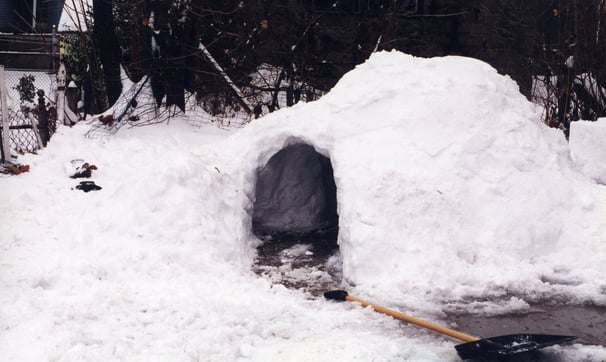Emergency Shelter Options: Beyond the Basic Tarp and Tent
EDUCATIONSHELTERBUSHCRAFT


In times of emergencies, natural disasters, or humanitarian crises, finding shelter becomes a paramount concern.
In times of emergencies, natural disasters, or humanitarian crises, finding shelter becomes a paramount concern. While basic tarps and tents have been the go-to solutions for temporary shelter, innovative and sustainable alternatives have emerged to offer better protection, comfort, and long-term viability. In this blog post, we will explore some advanced post-emergency shelter options that go beyond the traditional tarp and tent solutions, offering hope and dignity to those affected by calamities.
Prefabricated Modular Shelters
Prefabricated modular shelters have gained popularity in post-emergency scenarios due to their ease of assembly, cost-effectiveness, and versatility. These shelters are designed and manufactured off-site, then transported to the affected area for quick installation. Their modular nature allows for easy customization and scalability, making them suitable for both small and large-scale emergency responses.
These shelters are typically constructed with durable materials and can withstand extreme weather conditions, offering enhanced protection compared to basic tarps and tents. Additionally, they provide better insulation, ventilation, and improved living conditions, helping people regain a sense of normalcy and stability during trying times.
Geodesic Domes
Geodesic domes have emerged as a sustainable and resilient option for post-emergency shelters. Inspired by the principles of Buckminster Fuller, these structures have a unique spherical shape made up of interconnected triangles, creating a self-supporting and stable framework. Geodesic domes are known for their strength, energy efficiency, and ability to withstand high winds and heavy snow loads.
These shelters can be constructed using a variety of materials, including recycled plastic, wood, or metal, making them environmentally friendly. Their inherent design also allows for efficient use of space, making them ideal for community centers, medical facilities, and schools in addition to individual shelters.
Shipping Container Shelters
Repurposing shipping containers into emergency shelters has gained traction as a sustainable solution. These containers are readily available and can be transformed into functional living spaces with minimal effort. With proper insulation and ventilation, shipping container shelters provide durable and secure accommodation for displaced populations.
One significant advantage of using shipping containers is their mobility. They can be easily transported to different locations or repurposed for other uses once the emergency situation has passed, reducing waste and maximizing resources.
Earthbag Shelters
Earthbag shelters, also known as sandbag shelters, are eco-friendly and cost-effective alternatives for post-emergency housing. They are constructed using bags filled with earth or sand and stacked to create sturdy walls. This building technique has been used for centuries and has proven to be resilient against earthquakes, hurricanes, and other disasters.
Earthbag shelters offer excellent thermal insulation, which helps maintain comfortable temperatures in extreme climates. They are also fire-resistant and resistant to flooding, making them suitable for various disaster-prone regions.
Tensile Structures
Tensile structures are innovative shelters that use tensioned fabric to create versatile and durable housing solutions. These structures can be set up quickly, and their lightweight nature makes them easy to transport and deploy in challenging terrains.
Tensile shelters provide excellent protection from the elements while allowing natural light to filter through, creating a bright and uplifting living environment. Due to their flexibility, they can be used as temporary shelters, medical facilities, or communal gathering spaces.
Conclusion
While basic tarps and tents have been reliable emergency shelter options, advancements in shelter technology have opened up new possibilities for providing improved living conditions and a sense of stability in the aftermath of disasters. Prefabricated modular shelters, geodesic domes, shipping container shelters, earthbag shelters, and tensile structures offer durable, sustainable, and resilient alternatives that cater to the diverse needs of displaced populations.
As communities continue to face the challenges posed by natural disasters and humanitarian crises, investing in these innovative shelter options can go a long way in restoring hope and dignity to those affected and helping them rebuild their lives with strength and resilience. Collaborative efforts between governments, NGOs, and private organizations are essential in bringing these advanced shelter solutions to the forefront of emergency response strategies, ensuring a brighter and more secure future for all.
Snow shelters are temporary structures built in snowy regions to provide protection from harsh weather conditions. They are typically made by packing snow to form walls and a roof, creating a small enclosed space. These shelters are commonly used by adventurers, hikers, and mountaineers during expeditions or emergencies. Snow shelters can be lifesaving in extreme environments where temperatures drop significantly, as they offer insulation and keep occupants warm. They are designed to withstand heavy snowfall and strong winds, providing a secure refuge for those in need. These structures require careful construction and knowledge of snow and weather conditions to ensure their stability and safety. Snow shelters serve as a crucial defense against the elements in snowy landscapes, offering comfort and protection to those who seek shelter in them.
